Holy Places in the Republic of Ireland

Updated On: February 01, 2024 by Aya Radwan
Ireland has been a religious island since the dawn of time, and its religiousness shows in the varied holy places in almost every county. The island venerated Gaelic and ancient Irish gods and spread their beliefs wherever they went on the European continent. Centuries later, Christianity came, and Ireland has been at the forefront of embracing the new religion, offering many saints and martyrs to the world.
The interesting holy places in Ireland testify to its religiousness since the early ages. Such sites are diverse from one county to another; they can be old church or abbey buildings, the remains of an ancient temple or even parts of a transept, an effigy, or a mummy. In this article, we will take a trip through the different holy places in the Republic of Ireland.
Corcomroe Abbey, County Clare
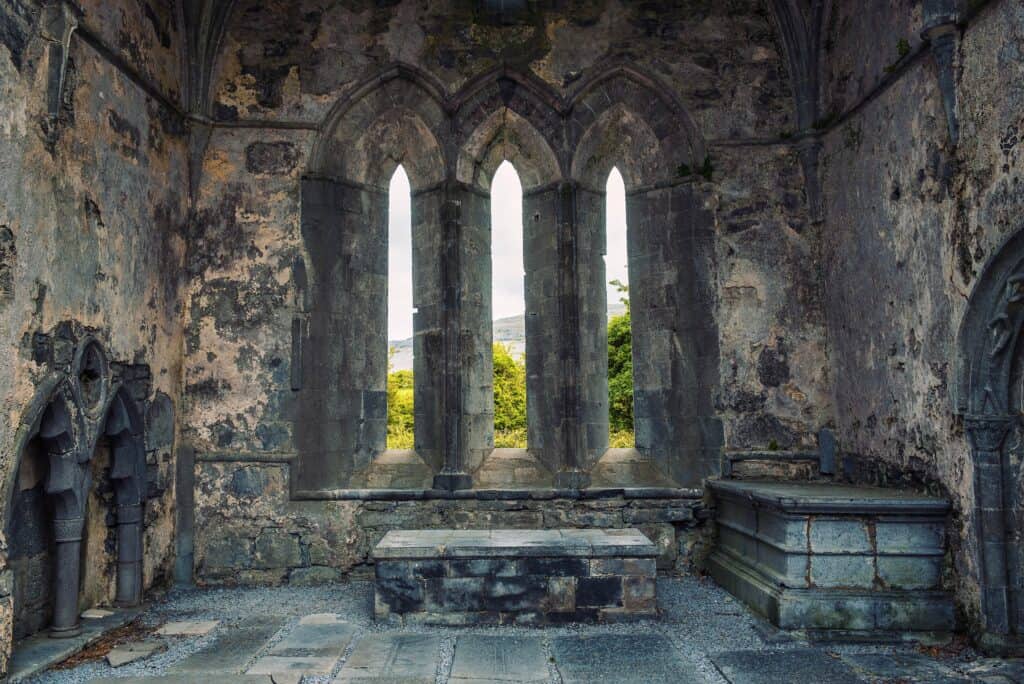
Corcomroe Abbey is an old Cistercian church from the 13th century, located in the north of County Clare. There are conflicting accounts of the exact foundation time of the abbey and who ordered it, whether it was Donal Mór Ua Briain, a patron of many religious buildings at the time, or his successor Donough Cairbreach. Nevertheless, a legend says that King Conor na Siudane Ua Briain commissioned the building and executed the masons who worked on it to prevent them from recreating their work elsewhere.
Many ornamental elements of the church distinguish it from similar Cistercian churches of its time and show how well the church stood against time. This includes the capitals, columns, and ribs supporting the ceiling of the vaulted sanctuary. The abbey’s roof is missing, or perhaps the builders never completed it, but the buildings held quite well. King Conor na Siudane Ua Briain, who died in battle, is buried in the sanctuary with a limestone effigy above the tomb.
Holy Island, Lough Derg, County Clare
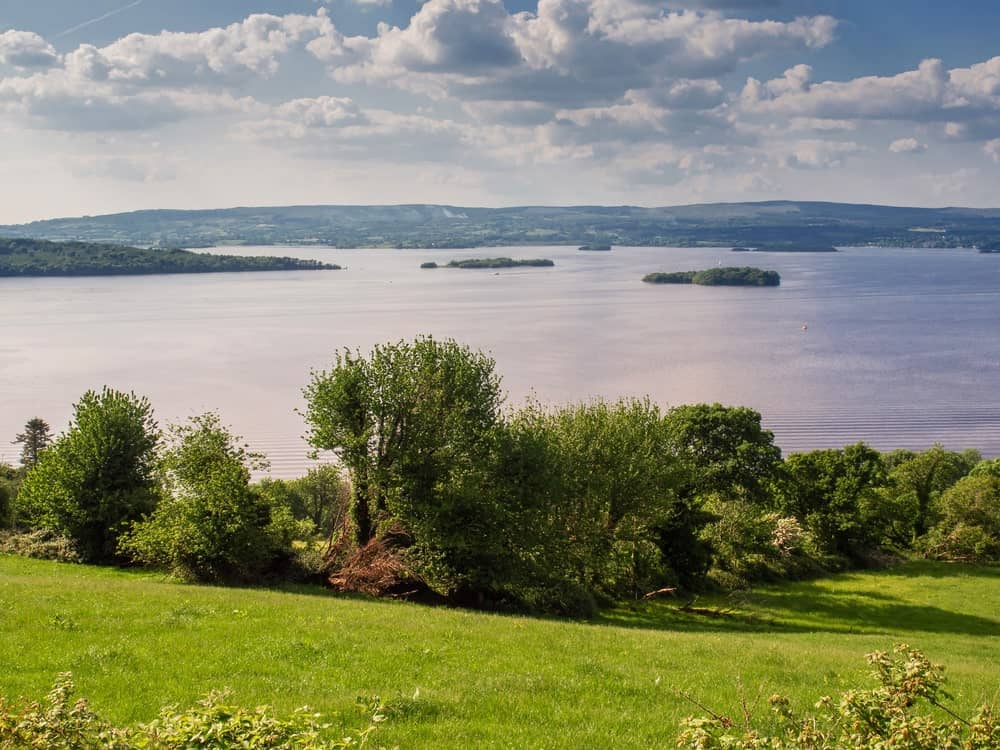
Holy Island, or Inis Cealtra, is a small uninhabited island on the west shore of Lough Derg Lake. The island is home to the ruins of several small churches, four high crosses, a holy well, and an Irish round tower. St. Colum was the first to found a monastery on the island in 520 AD, followed by St. Caimin’s foundation of a second monastery and famous school. The Vikings attacked the island several times and killed many of the monks living there.
The four churches on the island are a small Romanesque Baptism Church, St. Caimin’s Church, St. Mary’s Church, and St. Michael’s Church, and the earliest ruins of these churches date back to the 10th century. The round Irish tower remains without a cap, which indicates the occupants never finished it. The Saints’ Graveyard can be accessed through the 19th-century graveyard and has Irish markers from the 11th century.
The Seven Churches, County Galway
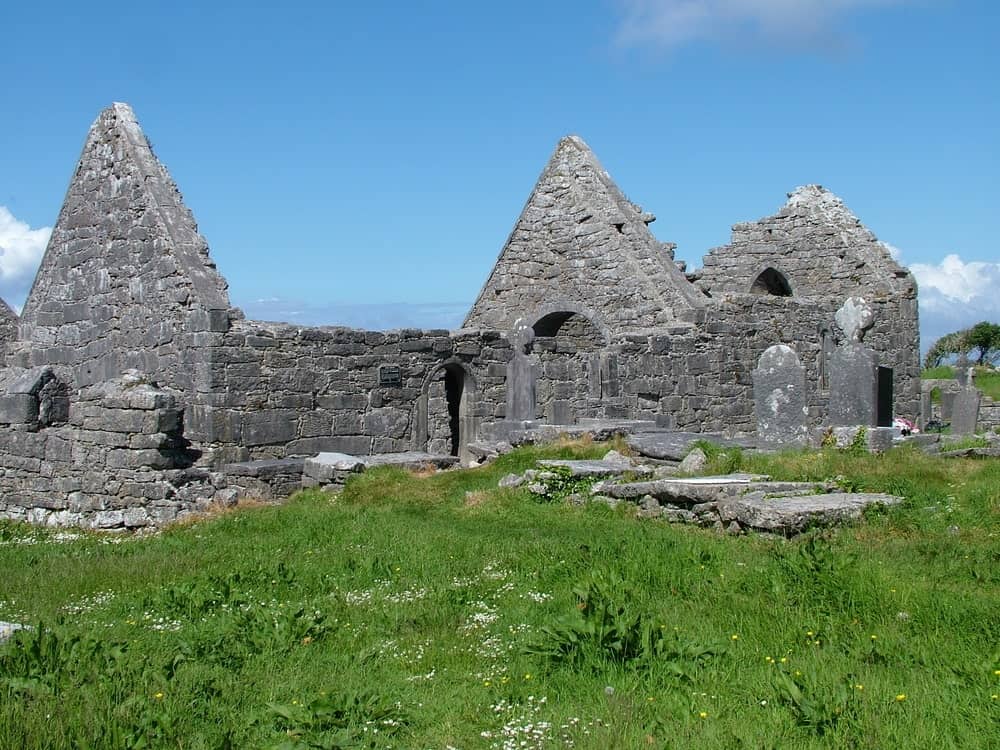
Na Seacht Teampall is one of the most famous Christian pilgrimage sites in Ireland. Despite the name, there are only the structures of two churches on the land, and legend says the Seven Churches either refers to the number of visible structures or that the area was on the route of a Roman pilgrimage that included seven churches along the way. However, the seven marked graves of saints buried in the location complicate the legend.
St. Breacan’s Church dates back to the 5th century and is larger than the second church, the Church of the Hollow, which dates back to the 15th century. The site is open for visitors and pilgrims, but it’s still an active graveyard where locals bury their dead.
Athenry Dominican Priory, County Galway
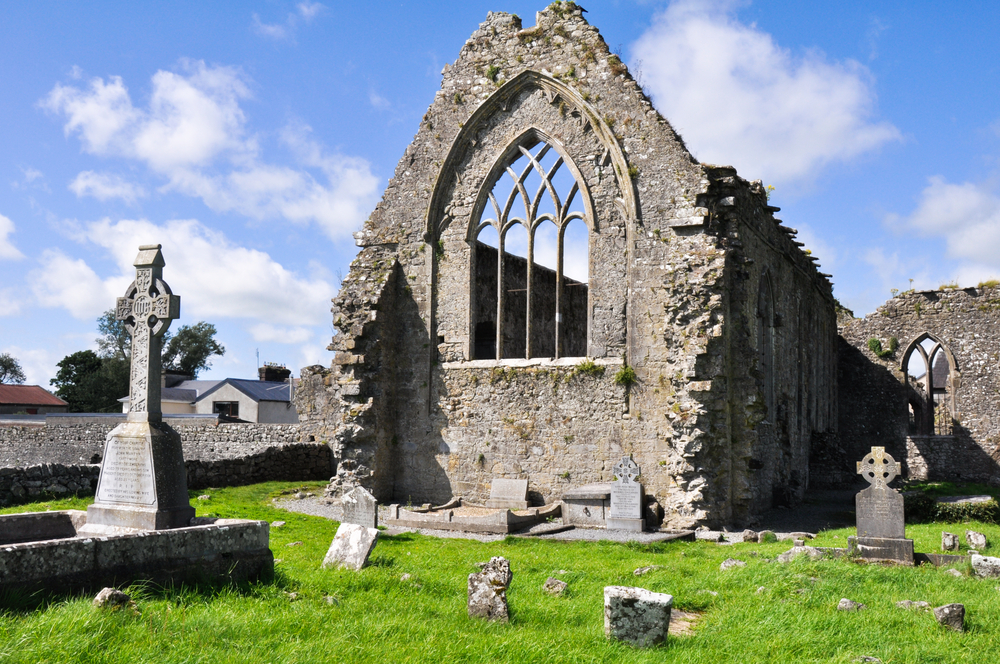
The Athenry Dominican Priory is a holy place known as the Priory Church of Saint Peter and Saint Paul. Meyler de Bermingham founded the monastery in 1241, and many other notable characters donated for the construction to finish, such as King Feidlim Ua Conchobair of Connacht, who funded the refectory, and Conchobar Ó Cellaigh, King of Uí Maine, who funded the structure of the chapter house.
Over four centuries, from the 13th to the 17th century, construction of the priory was finished, and it later suffered from grave destruction and abandonment. A house of scholars joined the buildings of the priory in the 1250s, the now-destroyed refectory in 1265, and the chapel’s construction was finished by 1340. The church and the priory were enlarged, and new choir windows and a new east window were all added in the mid-14th century and the beginning of the 15th century.
A fire burned the priory in 1423, and despite its dissolution, the priory suffered another fire in the 1570s during the uprising of William mac an Iarla Burke. The priory served as a university in 1644, but Cromwellians shut it down, and the priory hasn’t seen occupants since 1698. Many of the De Bermingham family are buried at the priory, such as its founder Meyler, his son William, and Lady Mathilda Birmingham, who was the last to be buried there.
St. Oliver Plunkett’s Head, County Louth
This is a sombre and bone-thrilling reminder of the religious persecution the faithful suffered from after the Cromwellian invasion of Ireland. St. Oliver was a Catholic priest in the 1650s who established a haven for Christians by founding the first integrated school in Ireland, where Catholic and Protestant students went.
After a deceiving plot, the authorities found Plunkett and sentenced him to death. On 1 July 1681, St. Oliver was savagely hanged, drawn, and quartered, and his parts were buried in Saint Giles-in-the-Fields’s courtyard. The remains were transferred to Rome for some time, but then his head was moved to its final resting place in Drogheda, Ireland.
Oliver Plunkett was canonised in 1975 and became Ireland’s patron saint of peace and reconciliation in 1997.
Caher Island, County Mayo
Caher Island is an uninhabited island and a holy place of pilgrimage. The island, located on the shores of County Mayo, fills with pilgrims in celebration of the Feast of the Assumption on the 15th of August every year. Ruins on the island include a Christian monastery, a chapel, carved slabs, and the ruins of 7th-century hermitages. The only way to access the island is preferably by small boats, as the Atlantic waves can hit the island any time throughout the year.
Grange Stone Circle, County Limerick
As you drive by Lough Gur heading west, you will come across the largest and one of the oldest stone circles in Ireland. This holy place dates back to the Neolithic and Bronze Ages when stone henges were built to behold sacred rituals. Grange Stone Circle consists of 113 stones lying in a 46-metre-diameter circle, and its entrance is aligned with the rising sun during the Summer Solstice.
When researchers excavated Grange in 1939, they found thousands of animal bones and broken beaker pots, which confirmed the assumption that the circle was the location of sacrificial rituals. You can visit the circle anytime; there are no fees or opening times.
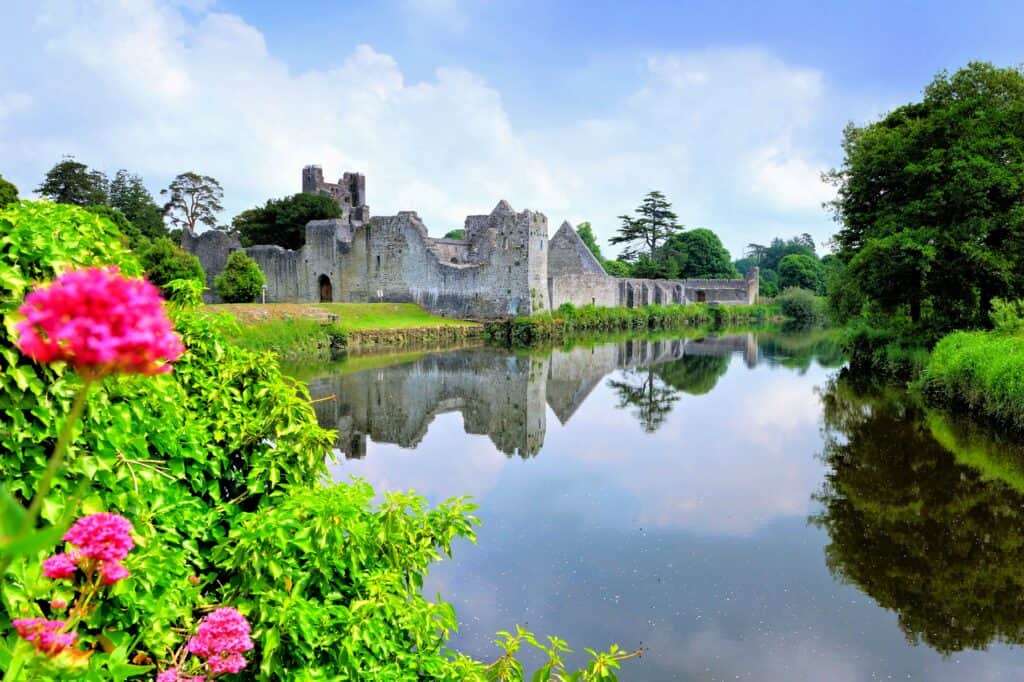
Holy Cross Abbey, County Tipperary
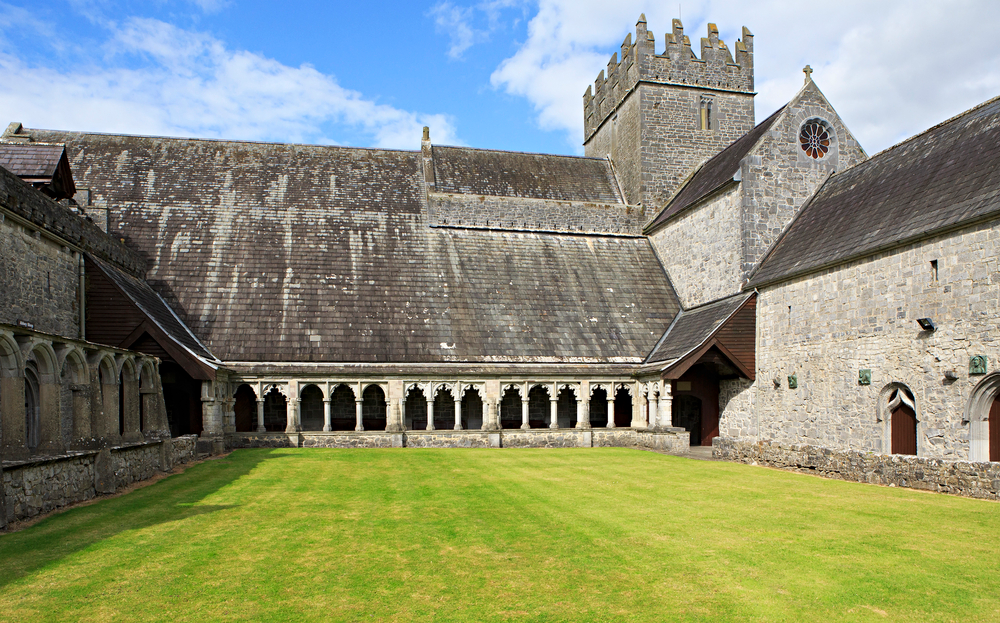
King Donal O’Brien of the Thomond founded the Holy Cross Abbey in 1169 as a Cistercian monastery. This holy place derives its name from a piece of the True Cross, which Queen Isabella of Angoulême brought to the abbey in 1233. The relic emphasised the abbey as a pilgrimage destination during medieval times and, by time, a place for Catholics to escape religious persecution.
Believers haven’t seen the True Cross in public since 1632; unfortunately, the abbey fell into ruins following the Cromwellian war. After 1740, the locals utilised the roofless buildings as burial grounds until the authorities declared the abbey a national monument that was to be preserved and not used for worship in 1880.
On 21st January 1969, the Dáil in Ireland passed special legislation that allowed using the abbey again as a place of Catholic worship. The Vatican followed this historical decision by providing the abbey with an authenticated piece of the Holy Cross and again bestowed the Jerusalem Cross emblem on the abbey.
Croghan Hill, County Offaly
Croghan Hill is a holy place that was once an active volcano. The hill and the summit, in particular, offer panoramic and beautiful views of the midlands. There are several religious structures on the premises: the remains of a mediaeval church and a graveyard lie on the eastern slope, and the ruins of a mediaeval settlement, castle, and church lie on the western foot. The pagan burial mound at the top dates back to the Bronze Age and has never been excavated, and several holy wells surround the hill.
Irish mythology mentions Croghan Hill as Brí Éile, which is believed to derive from the words “prayer, praise” and that she was an otherworldly goddess living in the mound and guarding the door to the Otherworld. Each Samhain, Irish men went up the hill to try and lure the beautiful goddess, and mysteriously afterwards, one of them got killed to mark the event.
Some associate Saint Brigid with the slope because she had to perform a miracle to get over the bogs around the hill. Furthermore, the church on the eastern slope carries the name of Bishop Mac Caille, who was associated with Saint Patrick.
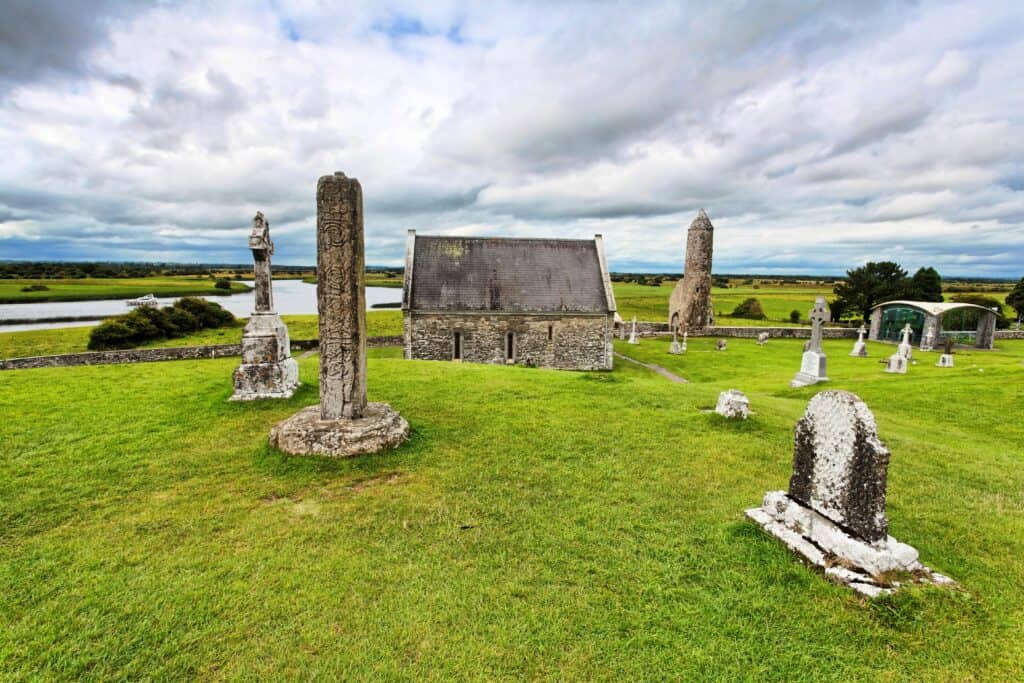
Glendalough, County Wicklow
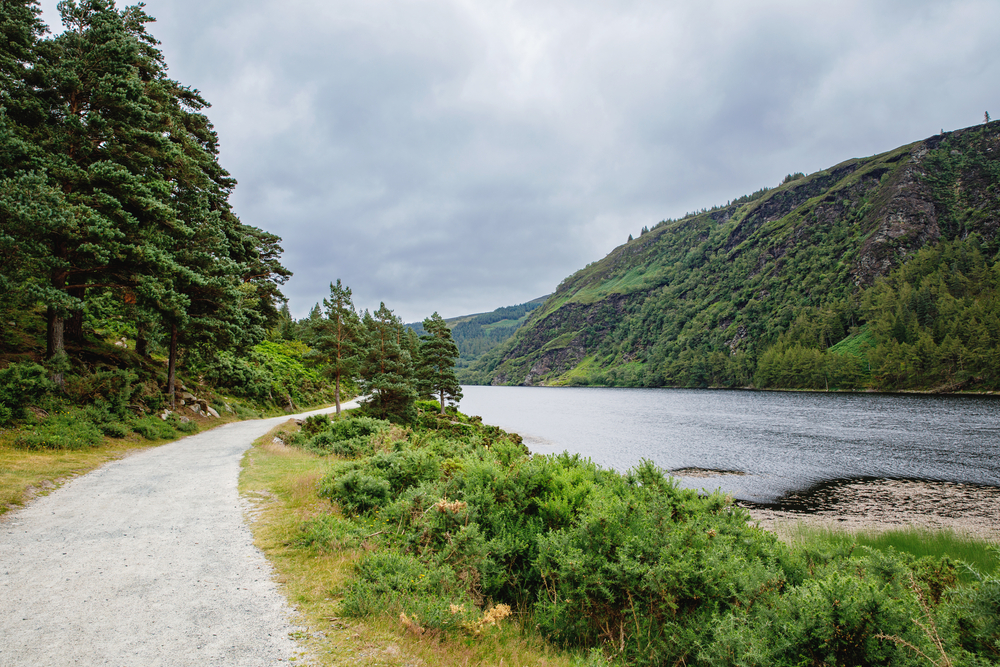
Glendalough is a glacial valley that is known for many features, most notably the early mediaeval religious settlement established by St. Kevin in the 6th century. This is in addition to the different walking, hiking, picnicking, and rock-climbing trails. True to its meaning, “the valley of two lakes”, there are two Glens or Loughs in the valley, and each holds many holy places.
St. Kevin went to Glendalough to meditate and study and was to return to Leinster with some of the monks from the valley to establish a new monastery. However, St. Kevin stayed in Glendalough to battle his own demons and remained there until he died in 618. The settlement’s religious importance increased, which attracted raids from outside. The English forces plundered the settlement in 1398, and since then, the church has only kept working, and the site has remained a place of pilgrimage.
The Lower Glen includes one of the unique gateways in Ireland, a mica-slate Round Tower, and the Cathedral of Saints Peter and Paul, the largest building in Glendalough. You can also find the re-constructed Priests’ House, which is believed to have housed St. Kevin’s remains. The remains of several other churches exist on site, such as St. Ciarán’s Church, St. Mary’s Church, the small and simple Trinity Church, and the remains of the latest building in the lough, St. Saviour’s Church.
The Upper Glen also houses several religious monuments, such as the remains of the Reefert Church and St. Kevin’s Cell, which is the cave that makes St. Kevin’s Bed. You can also find The Caher, which encloses several crosses that act as stations along the pilgrimage route, and the small church of Temple-na-Skellig. One of the mediaeval pilgrimages that ends at Glendalough is the 30-kilometre trail of Saint Kevin’s Way, which starts from Holywood in the west.
Our Lady’s Island, County Wexford
The village of Lady’s Island is connected through a causeway to the mainland, which explains the name “Lake of the Causeway.” Our Lady’s Island has been a holy place of worship since the 6th century, with a dedication to the Blessed Virgin Mary, making it one of the oldest Marian Shrines in Ireland. This dedication made the island a destination for pilgrims, which continues until today in the pilgrimage season in August.
Our Lady’s Island holds the remains of the old church, a graveyard, and a small leaning tower. The ground under the tower was unstable and caused it to lean to one side over time.
Skellig Michael, County Kerry
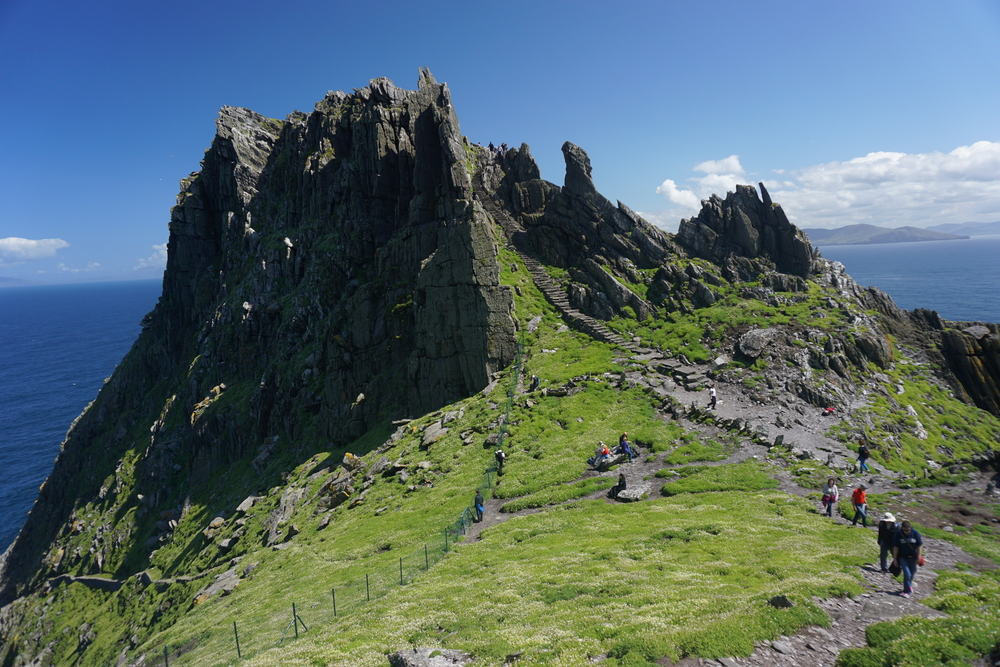
Skellig Michael is a mountain west of the Iveragh Peninsula, and the high ocean water separates it from the mainland. The Skellig is famous for its twin peaks and the Gaelic monastic settlement that dates back to the 6th or 8th century. It’s safe only to approach the Skellig during summer, and access is available to pilgrims via boats and steep stone stairs on the mountain.
Arwystli ordered the building of the monastery to protect the doctrine of the Culdee Church. Before their journeys to Jerusalem, it was a major stop for several Christian bards, such as Dewi and Padarn. Besides the remains of the monastery, there is a High Cross, a Graveyard, and dry-stone huts. The island has been a regular pilgrimage destination since the early 16th century, especially for Culdee Christians.
Drombeg Stone Circle, County Cork
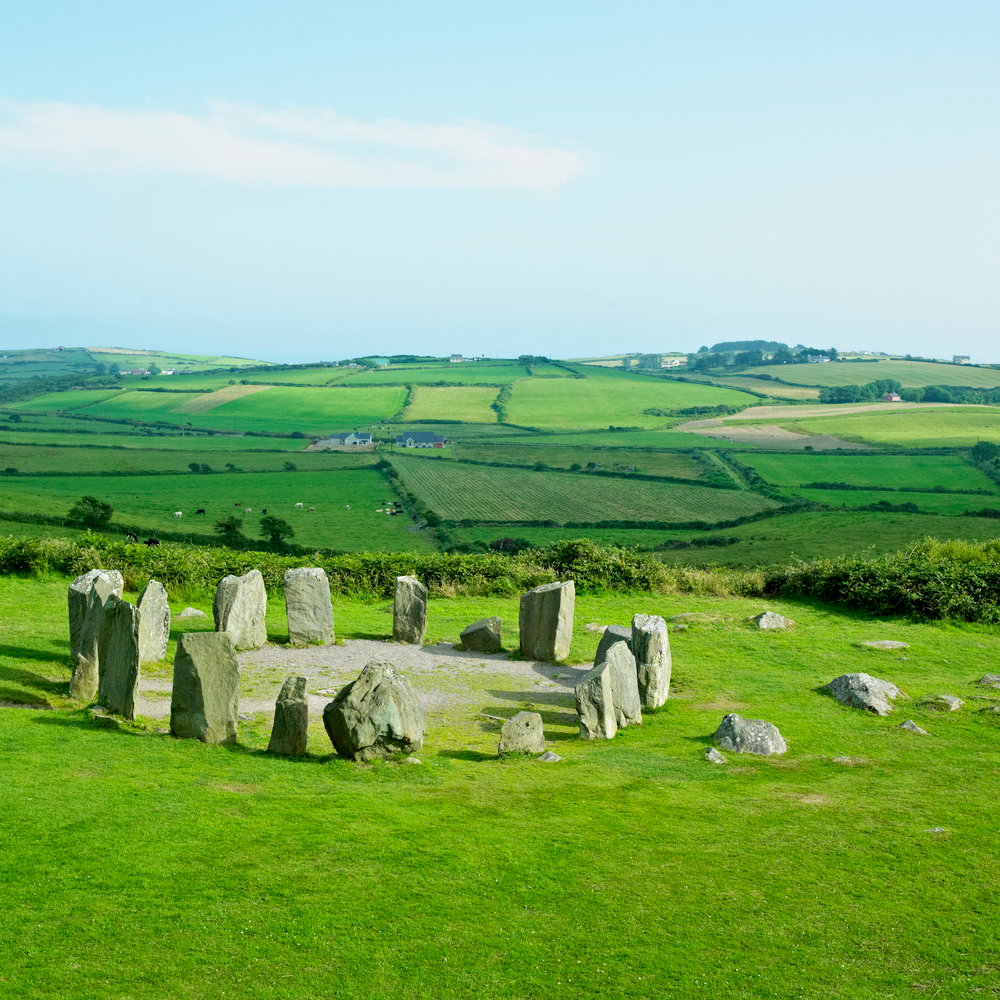
The Drombeg Stone Circle is listed as one of the most visited megalithic holy places in Ireland. It consists initially of 17 stones, while only 13 survived today, and its stones are aligned with the sunset of the midwinter solstice. This stone circle is called an axial or Cork-Kerry stone circle, which refers to certain stone circle formations found only in County Cork and County Kerry. The stones were excavated after finding the ashes of a young adolescent in a pot wrapped in thick cloth.
Two stones mark the entrance, each standing 1.8 metres high, and they are placed opposite a recumbent axial stone. There are two prehistoric huts west of the circle and a burnet mound known as a fulacht fiadh. It’s estimated that the fulacht fiadh was used until the 5th century AD. Excavations and radiocarbon dating estimate the site was occupied from the Bronze Age to the early Iron Age.
These holy places represent a fraction of the sacred places the faithful and the devoted head to every year in a journey that would purify and restore the soul. Recently, many have chosen to walk the same paths as their ancestors in search of peace and hope away from the excessive materialisation of the modern world.






